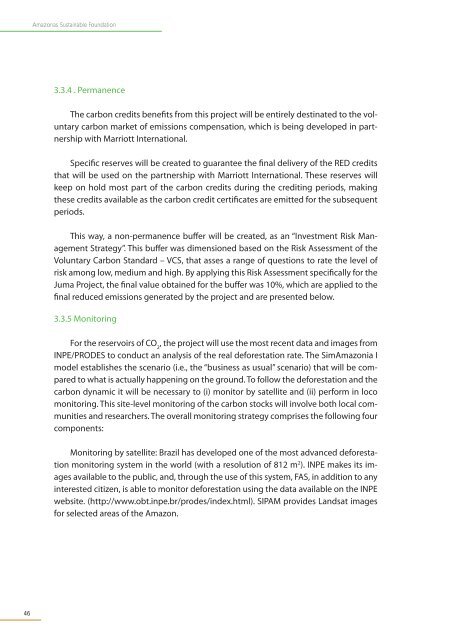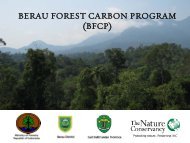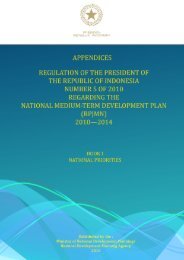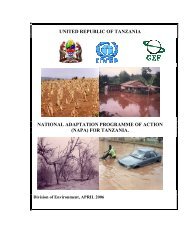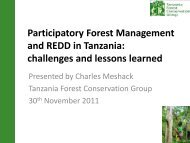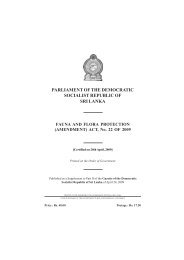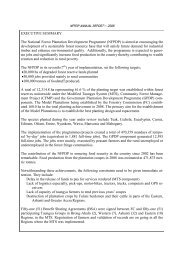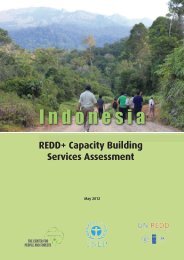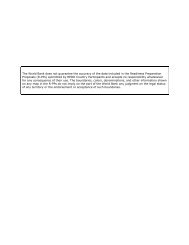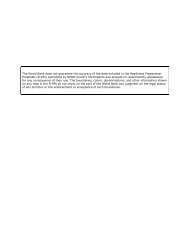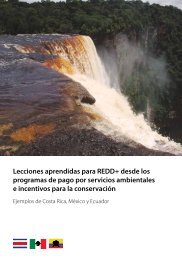Juma Sustainable Development Reserve: The ... - The REDD Desk
Juma Sustainable Development Reserve: The ... - The REDD Desk
Juma Sustainable Development Reserve: The ... - The REDD Desk
You also want an ePaper? Increase the reach of your titles
YUMPU automatically turns print PDFs into web optimized ePapers that Google loves.
46<br />
Amazonas <strong>Sustainable</strong> Foundation<br />
3.3.4 . Permanence<br />
<strong>The</strong> carbon credits benefi ts from this project will be entirely destinated to the voluntary<br />
carbon market of emissions compensation, which is being developed in partnership<br />
with Marriott International.<br />
Specifi c reserves will be created to guarantee the fi nal delivery of the RED credits<br />
that will be used on the partnership with Marriott International. <strong>The</strong>se reserves will<br />
keep on hold most part of the carbon credits during the crediting periods, making<br />
these credits available as the carbon credit certifi cates are emitted for the subsequent<br />
periods.<br />
This way, a non-permanence buff er will be created, as an “Investment Risk Management<br />
Strategy”. This buff er was dimensioned based on the Risk Assessment of the<br />
Voluntary Carbon Standard – VCS, that asses a range of questions to rate the level of<br />
risk among low, medium and high. By applying this Risk Assessment specifi cally for the<br />
<strong>Juma</strong> Project, the fi nal value obtained for the buff er was 10%, which are applied to the<br />
fi nal reduced emissions generated by the project and are presented below.<br />
3.3.5 Monitoring<br />
For the reservoirs of CO 2 , the project will use the most recent data and images from<br />
INPE/PRODES to conduct an analysis of the real deforestation rate. <strong>The</strong> SimAmazonia I<br />
model establishes the scenario (i.e., the “business as usual” scenario) that will be compared<br />
to what is actually happening on the ground. To follow the deforestation and the<br />
carbon dynamic it will be necessary to (i) monitor by satellite and (ii) perform in loco<br />
monitoring. This site-level monitoring of the carbon stocks will involve both local communities<br />
and researchers. <strong>The</strong> overall monitoring strategy comprises the following four<br />
components:<br />
Monitoring by satellite: Brazil has developed one of the most advanced deforestation<br />
monitoring system in the world (with a resolution of 812 m 2 ). INPE makes its images<br />
available to the public, and, through the use of this system, FAS, in addition to any<br />
interested citizen, is able to monitor deforestation using the data available on the INPE<br />
website. (http://www.obt.inpe.br/prodes/index.html). SIPAM provides Landsat images<br />
for selected areas of the Amazon.


